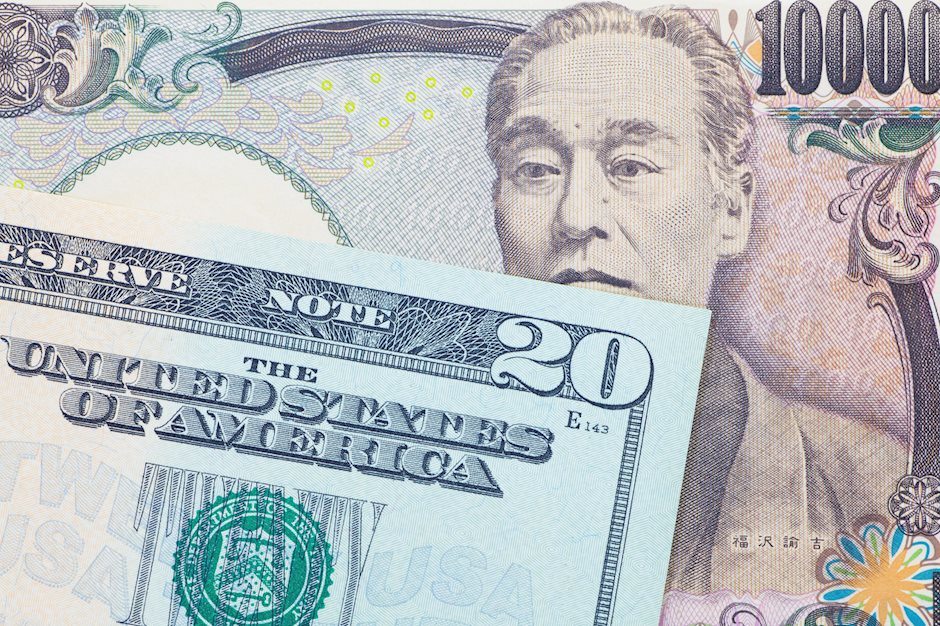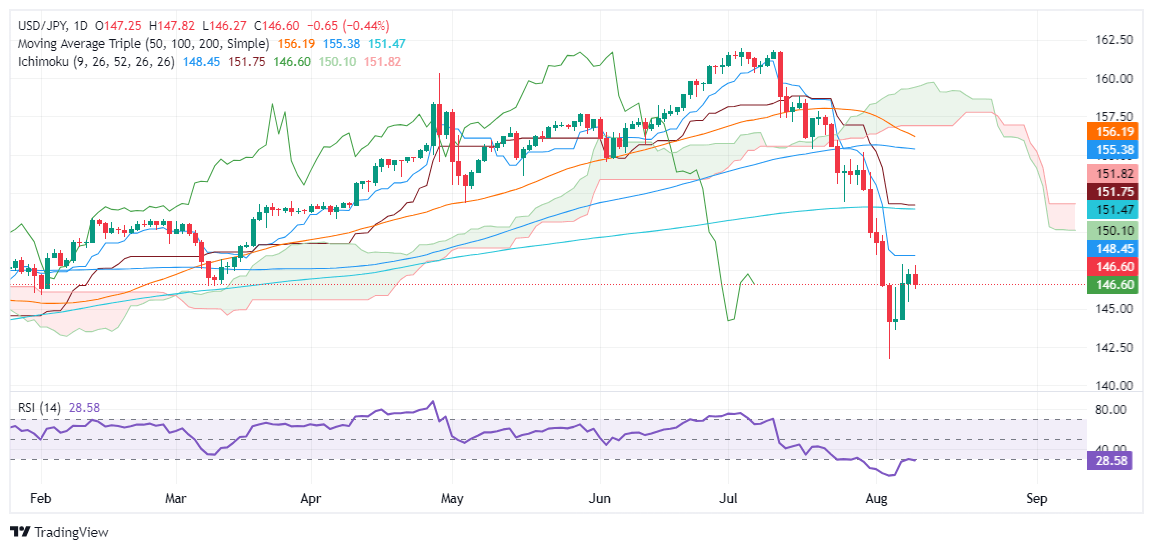USD/JPY Price Forecast: Drops below 147.00 as downtrend resumes
- USD/JPY falls after failing to clear 148.00 resistance, resuming its downtrend below 147.00.
- Bearish momentum strengthens; RSI near oversold, signaling potential for further declines.
- Below 146.00, key support levels include 145.44, 144.28, and 143.61; above 147.00, resistance targets are 147.89 and 148.45.

The USD/JPY retreats after failing to surpass the 148.00 resistance and extends its losses below the 147.00 mark, snapping three days of gains. At the time of writing, the major trades at 146.58, diving 0.48%.
USD/JPY Price Forecast: Technical outlook
On Thursday I wrote, “the USD/JPY is bearishly biased despite registering a recovery that saw the pair rally from under 144.00 to the current exchange rate after dovish comments by a Bank of Japan Deputy Governor.”
Once risk appetite returned, the USD/JPY resumed its downtrend. Buyers failed to clear the weekly high of 147.89, which exacerbated the pair’s fall beneath 147.00.
Momentum is bearish, although the Relative Strength Index (RSI) hovers near oversold condition.
If USD/JPY drops below the 146.00 mark, sellers will undoubtedly challenge the August 8 low of 145.44, followed by the August 7 bottom at 144.28. Once those levels are surpassed, the next support would be the August 6 daily low at 143.61, followed by the latest cycle low of 141.69.
On the other hand, If the pair climbs past 147.00, the next resistance will be the weekly top at 147.89 before challenging 148.00. Up next would be the Tenkan-Sen at 148.45.
USD/JPY Price Action – Daily Chart
Japanese Yen FAQs
The Japanese Yen (JPY) is one of the world’s most traded currencies. Its value is broadly determined by the performance of the Japanese economy, but more specifically by the Bank of Japan’s policy, the differential between Japanese and US bond yields, or risk sentiment among traders, among other factors.
One of the Bank of Japan’s mandates is currency control, so its moves are key for the Yen. The BoJ has directly intervened in currency markets sometimes, generally to lower the value of the Yen, although it refrains from doing it often due to political concerns of its main trading partners. The current BoJ ultra-loose monetary policy, based on massive stimulus to the economy, has caused the Yen to depreciate against its main currency peers. This process has exacerbated more recently due to an increasing policy divergence between the Bank of Japan and other main central banks, which have opted to increase interest rates sharply to fight decades-high levels of inflation.
The BoJ’s stance of sticking to ultra-loose monetary policy has led to a widening policy divergence with other central banks, particularly with the US Federal Reserve. This supports a widening of the differential between the 10-year US and Japanese bonds, which favors the US Dollar against the Japanese Yen.
The Japanese Yen is often seen as a safe-haven investment. This means that in times of market stress, investors are more likely to put their money in the Japanese currency due to its supposed reliability and stability. Turbulent times are likely to strengthen the Yen’s value against other currencies seen as more risky to invest in.
Author

Christian Borjon Valencia
FXStreet
Christian Borjon began his career as a retail trader in 2010, mainly focused on technical analysis and strategies around it. He started as a swing trader, as he used to work in another industry unrelated to the financial markets.


















